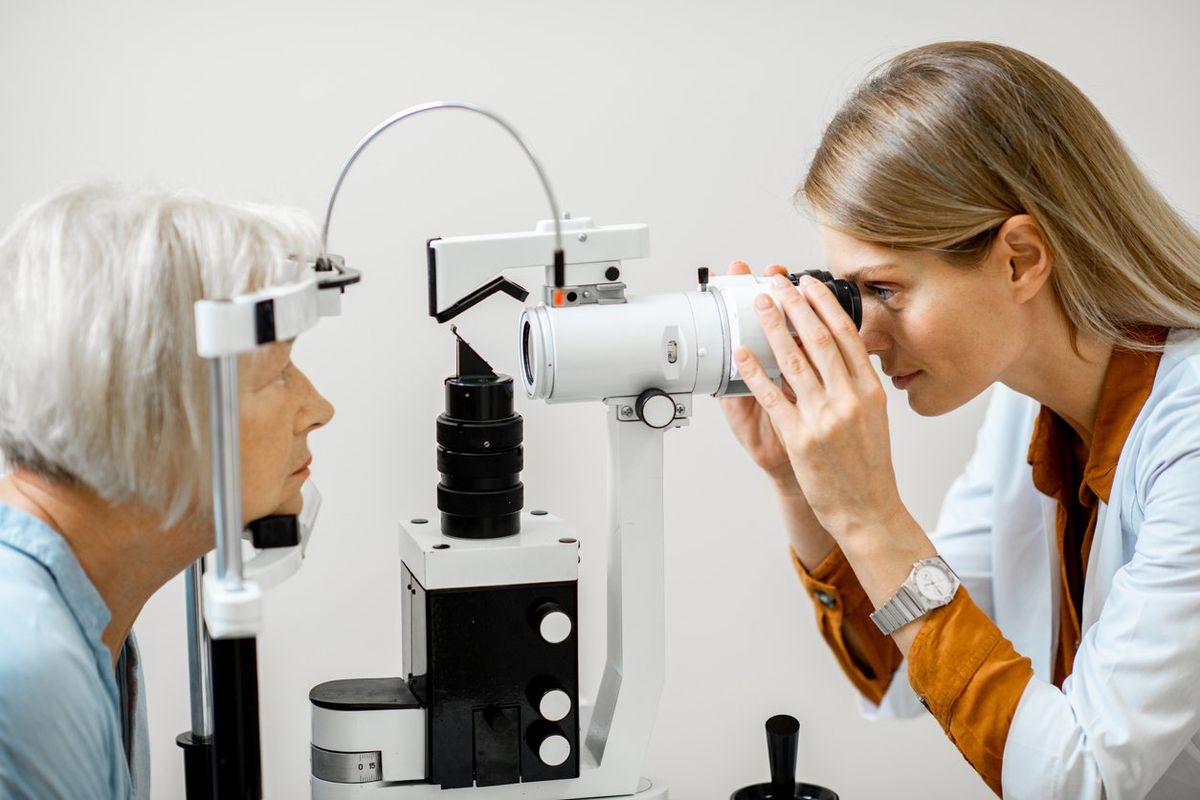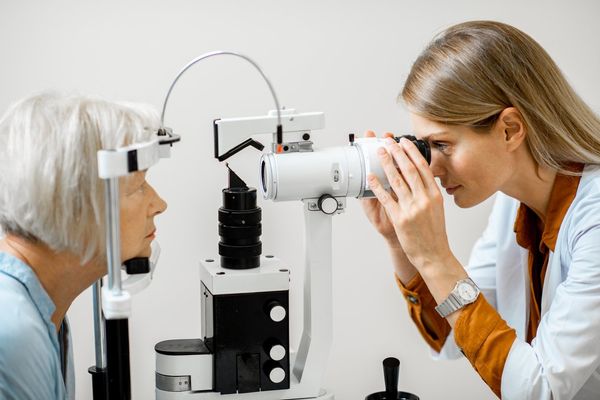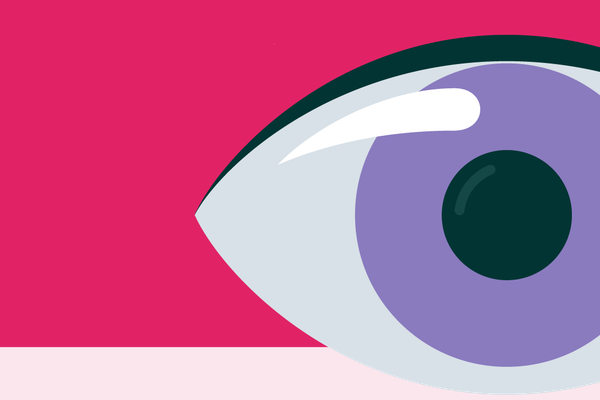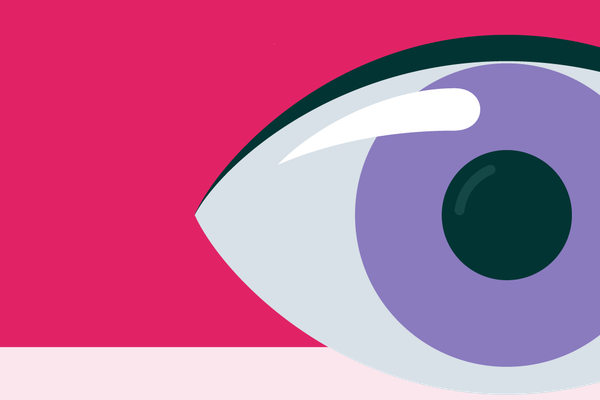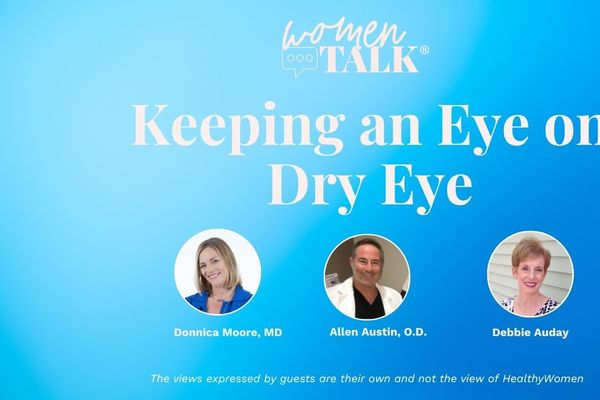More than 16 million Americans have dry eye disease, but the number of people dealing with dry eye may actually be much higher. The disease — which is almost two times more common in women and people assigned female at birth than men and people assigned male at birth — can be tricky to diagnose, and misinformation about dry eye often adds to the confusion.
In an effort to clear up any confusion, we reached out to Katherine Rachon, O.D., an optometrist at Virginia Eye Consultants, to answer some common questions about dry eye disease.
What is dry eye disease?
Dry eye disease is a broad term for a disorder with your tear film, the layers of fluid that protect and moisturize your eyes. With dry eye disease, one or more layers of the tear film isn’t working correctly. This can lead to symptoms such as redness, tearing, itching, a feeling of grittiness, blurred vision and redness of the eyelids.
There are two main types of dry eye disease, aqueous-deficient and evaporative. With aqueous-deficient dry eye, your eye does not produce enough of the watery part of your tear film to keep your eyes moist. Evaporative dry eye happens when there are enough tears, but the tear film isn’t sticking together properly. Some people have a combination of the two, which is sometimes called mixed dry eye.
Dry eye disease typically comes in waves, meaning it can flare up at times and then be quiet for a while. While most people with dry eye have symptoms, some don’t know they have it until it shows up during an eye exam.
What causes dry eye disease?
People used to think that dry eye disease mostly affected older and/or postmenopausal people, and certainly, age and biological sex are risk factors for getting dry eye disease. (People assigned female at birth are more likely to develop dry eye disease, mostly due to hormone changes that happen throughout life.) However, we now know that there are several additional factors that can affect development. For example, several medications — including chemotherapy drugs and over-the-counter antihistamines used to treat allergies — can trigger dry eye.
What are the different layers of tears?
There are three layers of tears that make up the tear film, and they all have different functions:
- The aqueous layer is the watery part of your tears, and it contains all the nutrients the tear film and the front part of the eye need.
- The lipid layer is the oily layer that prevents your tear film from evaporating too fast.
- The mucus layer is the part of your tear film that holds everything together.
How does a healthy eye make these tears?
A healthy eye produces enough of the three tear layers to create what is called a tear lake, which you can think of as a little reservoir that sits on our bottom eyelid. This reservoir holds just the right amount — it’s not too small to cause dryness and it's not too big to cause an overflow of tears.
What health conditions can bring on dry eye (or make it worse)?
A big one is diabetes because diabetes causes damage to nerves (including those in the eye). When the nerves in your eye don’t work well enough to notice that your eyes are dry, they don’t signal your brain to produce more tears.
Another condition that we see with dry eye disease is Sjogren’s syndrome, an autoimmune disease that affects the glands responsible for helping moisturize the eyes and other parts of the body. This syndrome — which mainly impacts women and people assigned female at birth — can occur on its own, or alongside other autoimmune conditions, such as rheumatoid arthritis and lupus.
Can cosmetics make dry eye worse?
Eye cosmetics can cause and trigger dry eye because many makeup products contain chemicals called parabens that have been shown to irritate the tissue and the front surface of the eyes. Parabens can also clog the glands that make the oily part of our tear film. The good news is that there are many paraben-free cosmetics out there. Switching up my makeup routine made a big difference in my own eye health.
What complications can dry eye disease cause?
Other than the irritation and discomfort, which can be very frustrating, dry eye disease can cause blurry vision. In the long term, dryness can also lead to eye infections because it breaks down the protective tissue that keeps viruses and bacteria from infecting the eyes.
Are most treatments for dry eye covered by insurance? Will I have to try older treatments first before I can get newer ones?
Dry eye disease has recently been gaining more awareness, and the treatment options have absolutely exploded — which is a good thing. Insurance companies may need a little time to catch up, and you may need to try an older treatment before a new one can be covered. With a little bit of convincing (and paperwork), I am usually able to get most treatments covered.
How should I prepare for an appointment with an eye care professional?
I encourage patients to keep a journal or a record of their symptoms. For example, is the dryness worse in the morning or in the evening? Do you have other symptoms like vision blurring or itching? What activities aggravate the dryness — is it going outside in the wind or is it computer use?
Also, and this is very important: What treatments have you tried before? Maybe you were recommended a treatment at another eye care provider and it didn’t work, or maybe you’ve tried different eye drops from the pharmacy and none of them worked. These things are all important for us to be able to start treatment, and also to prove to insurance that a particular treatment has already been tried so they’ll approve coverage for a different option.
Why is dry eye disease sometimes hard to treat?
It’s a very frustrating disease to treat for both patients and providers because there are so many factors that can play into dry eye disease. The provider can make an educated guess at which treatments will be best, but everyone is an individual and what might work for one person might not work for another.
USA-NON-2024-00011 05/24

